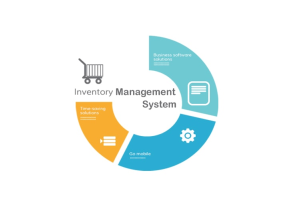The Role of Hosting Services in E-commerce Website Success
In Business, Official BlogE-commerce is a very significant part of today’s retail with customer convenience, choice, and access being important factors on the global market. The nature of today’s growing digital stores is critical because as the world goes online for business trades, the base on which such trades rest determines the level of efficiency. This foundation is none other than web hosting services that must be defining parameters and infrastructure for sociability online. Over the next few posts, readers will be introduced to the enormous significance of hosting services to online shops under the guideline of how Jain Software’s hosting services can transform the outlook of numerous e-commerce sites.
What is Web Hosting?
Web hosting is an online service that permits organizations and individuals to put a website or web page on the world wide web. A web host or hosting service is the business or organization that provides services and technologies required for the Internet to store and serve web sites or Wikipedia Web pages to browsers. Websites are actually reside on a server, which is a unique computer that is employed to keep up websites along with every one of their related information.
Where and Why Hosting Services Are Important to E-commerce
1. Performance and Speed
In particular, such parameters as performance and work speed are extremely important for e-commerce websites. A slow loading of a website means that customers will not get the best user experience hence leading to cart abandonment and finally, a business loses customers. Research has indicated that every additional second in the loading of a Web page may slash the conversion rates by 7%. Hosting services offered by Jain Software optimizes the performance of e-commerce website to keep the customers engaged so that chances of sales are high.
2. Uptime and Reliability
Web sites for electronic commerce must remain open 24/7. During the process of breakdowns, companies risk losing their sales, staining their reputation among the target audience, and, therefore, losing customer confidence. Good hosting services providers such as Jain Software ensure that 99% of the time is availed to the clients hence your website is up and running always. This reliability is critical to ensuring that the customers are retained as well as continued confidence in the product.
3. Security
Safeguard is vital since e-commerce tends to embrace consumers’ private information including credit card information. Secure hosting service gives protection from viruses, Trojan horses, hackers, and other similar malicious acts in the server. Jain Software’s hosting solutions are protected by SSL certificates, firewall protection services, and application security updates to guard your e-commerce website and its consumers.
4. Scalability
Since the e-commerce business increases, the website traffic and the necessary data also increase. A good hosting model must able to scale this growth with possible minimal impact to performance. Jain Software uses packages that are cheap and can be updated easily because the business needs may increase due to traffic and loads during end of year festivities or special sales events.
5. Support
The unpredictable technical problems may occur at any time, therefore, they can significantly affect your e-commerce activities. What is more, fast technical assistance must be provided to eliminate such problems and avoid downtimes. Jain Software offers customer support and support team technicians which is available 24/7, and they can be of great assistance in case of any problems concerning the hosting so that the website of the company at all times runs optimally.
Jain Software’s Hosting Solutions
Jain Software provide number of hosting services for e-commerce websites according to the requirements.
Here’s how their services stand out:
1. Shared Hosting
For the middle and small e-business selling products online, Jain Software offers the Shared Hosting plan to let you host your online store at reasonable prices while ensuring efficiency. On shared hosting multiple websites are hosted on the same server and although this is relatively cheap we get very good hosting. Jain Software makes it a point that the hosting environments they provide for their clients are to be fast and secure hence, it is perfect for new e-commerce sites.
2. VPS Hosting
While your e-commerce business scales, you might need more power and better tools than the shared hosting environment offers. Virtual Private Server (VPS) hosting means that you get dedicated part of the server where your website will be hosted which is faster, more secure, and allows more options. VPS hosting plans from Jain Software are specifically beneficial for those organizations who are preparing to grow as a company; it provides more control over the web hosting environment.
3. Dedicated Hosting
When it comes to huge e Retailer traffic is extremely high, dedicated hosting is most suitable. To provide your website an optimal functionality, security and control, you get an entire server just for your site known as dedicated hosting. Jain Software offers only the dedicated hosting plans which include the best of the best when speaking of the hardware used, the security measures provided, and the support offered is a perfect for highly-loaded and highly-claimed e-commerce sites.
4. Cloud Hosting
Among all the hosting services, cloud hosting is unmatched when it comes to different features: multiple server availability and load balancing to support the high availability of e-commerce websites. Unfortunately, Jain Software’s cloud hosting services are not available at the moment Cloud hosting means that resources are warranted automatically to accommodate sudden spikes in the website’s traffic. This makes the cloud hosting to be ideal for the e-commerce companies that experience varying traffic pattern and high reliability.
5. Managed Hosting
Thus, for those e-commerce organizations that wish to avoid the hassles of maintaining their own server, Jain Software offers managed hosting services. Managed hosting encompasses everything from the patching and securing of the host, creation of backups, as well as monitoring of the host’s performance. This makes it possible for you to focus on the management and expansion of your company as Jain Software manages the technology part.
Case Studies: Testimonials regarding Jain Software using its Hosting
B) Case Study 1: Ensuring High Online Store’s Performance for the Growing E-Commerce Company
A mid-sized online retailing firm was growing fast and their existing shared hosting plan was not so perfect in terms of performance. They moved to VPS hosting offered by Jain Software to get the necessary resources and get the needed performance boost. Consequently, the American Dream website’s speed was enhanced and the client satisfaction and sales grew accordingly.
4 CASE STUDY 2: ASSURING RELEVANCY DURING BUSY SHOPPING SEASONS
A specific forward e-commerce site that focused on holiday gifts had some limitations with their previous hosting service during the end-of-year shopping spree. As a result of these two flaws, sales were a problem due to the constant downtimes and slow speeds of the servers. Thus, the business obtained such benefits from the transition to the cloud hosting solution at Jain Software as high uptime and traffic capacity, which helped the business compete for the holiday season and record sales.
Case Study 3: Improvement of Security Parameters of a Large B2C Internet Store
An immense online store working with personal information of its clients demanded increased protection. The needful safety was, however, met by the Jain Software’s dedicated hosting plan which came loaded with the necessary robust securities. Although this was a challenge, it helped in two ways; first it protected the customers’ data and second it improved the affiliate marketing platform’s security reputation, which in turn raised the customers’ trust on the platform.
Conclusion
Where a business is located or operates within e-commerce, the website must be reliable, fast and secure in today’s world. The decision on which host to go with, shapes the overall functionality, stability, security, and flexibility of your e-commerce site. Through all the hosting services provided, Jain Software enables company websites to be always up, secure and able to expand in proportion to the business. If you are hosting your e-commerce site with Jain Software, you can leave all the technicalities to them, while you concentrate on building your business.











 rm to the established workflows at the company and also offer features that would benefit the company most.
rm to the established workflows at the company and also offer features that would benefit the company most.